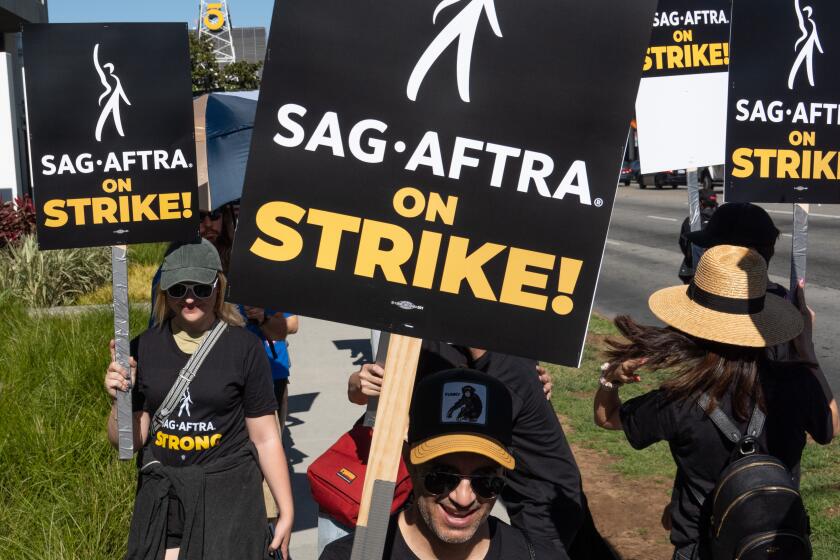Memo appears to confirm SpaceX capsule was lost in explosion
A video circulating on the internet that appeared to show SpaceX’s astronaut capsule exploding during an April 20 test was leaked from the test area, according to an internal memo issued by a major NASA contractor.
The memo appeared to confirm that the capsule was destroyed — a fact that neither NASA nor SpaceX have yet confirmed publicly.
“As most of you are aware, SpaceX conducted a test fire of their crew capsule abort engines at [Cape Canaveral Air Force Station], and they experienced an anomaly,” read the email issued by the aerospace company Jacobs and obtained by the Orlando Sentinel. “Subsequently, video of the failed test — which was not released by SpaceX or NASA — appeared on the internet.”
Jacobs provides ground systems capabilities, flight hardware processing and launch operations under a test and operations support contract (TOSC) at Kennedy Space Center. The company said it was clamping down on employees taking photos inside Kennedy’s gates and warned them they could be fired if they did so.
The video surfaced shortly after the accident, which SpaceX said occurred during a static fire test of the SuperDraco engines that push the capsule away from a rocket in the case of an emergency. The capsule, called Crew Dragon, is under development for NASA under its Commercial Crew Program, which endeavors to return astronauts to space from U.S. soil for the first time since the space shuttle was retired in 2011.
An accident of this magnitude puts into question the timeline for the program, which has had $6.8 billion in taxpayer dollars pumped into it from NASA through contracts with SpaceX and Boeing, which also is building an astronaut capsule.
But despite the cloud of orange smoke that billowed over the cape after the accident, NASA and SpaceX have been tight-lipped about the extent of the damage to the vehicle. Both have said they are focused on concluding their investigation, which SpaceX is leading with NASA’s support, before releasing further details. They have not commented on how the accident may affect the future of the program.
The grainy video of the explosion first appeared on the Twitter account of user Astronaut099 but has since been deleted. It shows the Crew Dragon on a test stand at what appears to be Landing Zone 1 at Cape Canaveral Air Force Station, where the accident took place. A few seconds into the video, the spacecraft explodes and bursts into flames, while voices are heard shouting expletives.
“Oh no!” one off-camera voice says.
Test and operations support contract employees were told in the email Monday that they were “prohibited from photographing or videotaping operational activities that take place on KSC CCAFS property unless officially authorized,” as well as releasing any imagery whatsoever regardless of its origin to the public.
“It is up to NASA and other companies onsite to make the determination about what information related to their activities is released to the public,” the email read.
Tracy Yates, a spokeswoman for Jacobs on the TOSC contract, confirmed that an email was recently sent out to its employees reminding them of the policy prohibiting the release of images related to TOSC or its customer’s activities at the space center.
“This policy includes a standard warning which states that violation of guidelines could result in disciplinary action up to and including termination and removal from employment,” Yates said in a statement to the Orlando Sentinel. “This communication was intended as an internal reminder to our TOSC workforce. It is common practice for businesses to provide guidelines to employees regarding the release of information pertaining to company business or activities.”
Yates added that the company did not believe a TOSC employee was involved in the video leak and cautioned that the rules were due to the sensitive nature of employees’ work.
NASA awarded SpaceX $2.6 billion and Boeing $4.2 billion in 2014 to develop their astronaut-rated spacecraft to end the United States’ dependence on Russia to ferry astronauts to the International Space Station at more than $80 million a seat.
SpaceX’s development of the Crew Dragon capsule was moving forward successfully, particularly after the spacecraft performed a six-day test run to the space station in March. Up next, that same capsule was set to perform an in-flight abort test, proving it can separate and move away from the Falcon 9 rocket if there is a threat to astronauts’ safety.
SpaceX was preparing for that test during the static fire. A test with astronauts on board was initially scheduled for no earlier than July.
The initial investigation into what went wrong is currently focused on preserving the site of the accident, collecting data and developing a timeline of the anomaly, according to NASA’s Aerospace Safety Advisory Panel, which discussed the issue at a meeting Thursday.





